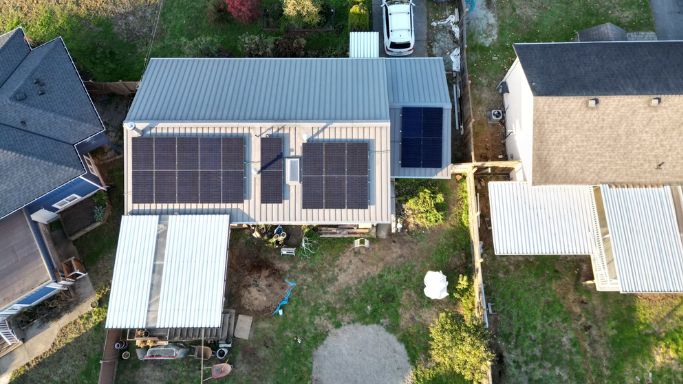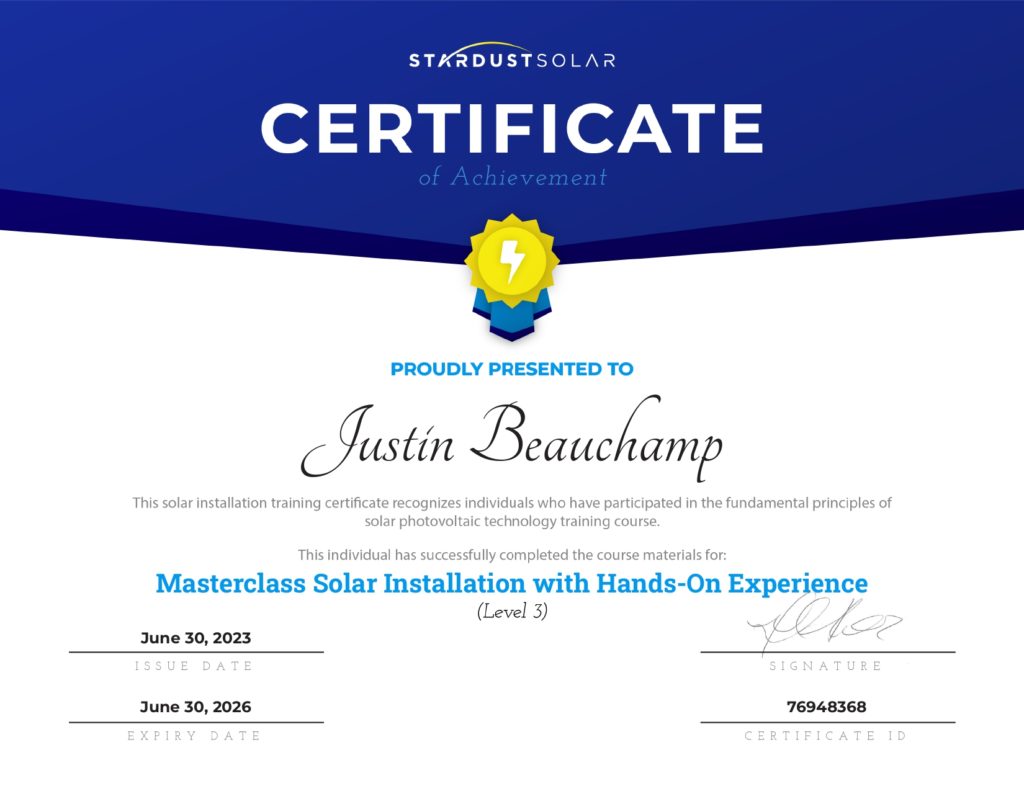Retrofitting homes, driven by environmental concerns and rising costs, has become a focus in Canada. According to Natural Resources Canada (NRCan), buildings account for 17% of the nation’s greenhouse gas emissions.
The solar industry, with the support of “solar energy companies near me,” focuses on upgrading insulation. This includes improving window performance and optimizing heating, ventilation, as well as HVAC systems.
Canada’s push toward a more sustainable future is important as solar energy systems can offset electricity costs and reduce reliance on grid power.
Why Retrofit Your Home?
Reduction in Consumption and Utility Costs
Residential buildings consume 16% of the country’s total supply. Heating and cooling accounts for over 60% of a home’s use. By improving the building envelope—such as installing better insulation, high-performance windows, and doors—heat loss can be minimized. For example, upgrading attic insulation to R-50 from R-20 can cut losses through the roof by up to 15%.
- Switching from gas furnaces to air-source heat pumps (ASHPs) can increase efficiency by up to 300%. These systems move warmth rather than generate it through combustion.
- Regarding cooling, central air conditioners with a higher Seasonal Energy Efficiency Ratio (SEER) can reduce electricity use by 30-50% compared to older units.
Environmental Impact and Carbon Footprint Reduction
Buildings contribute nearly 17% of Canada’s greenhouse gas (GHG) emissions, and residential properties are a huge part of that.
- A retrofit that includes solar panels helps a home generate clean electricity, reducing its dependence on fossil-fuel-based grid power.
- A 5kW solar power system can offset around 50-80% of a home’s electricity usage.
- Integrating battery storage, such as lithium-ion batteries, can enhance the home’s ability to store excess resources and provide backup during power outages.
- Retrofitting aligns with Canada’s target to achieve net-zero emissions with renewable energy by 2050.
For example, replacing gas water heaters with pump water heaters can reduce GHG emissions from domestic hot water heating by 50-60% since they are 2-3 times more efficient than standard electric or gas models.
Increased Property Value and Market Appeal
Homes with upgrades can sell for 3-5% more than comparable non-upgraded properties. Another benefit is Improved Home Energy Rating System (HERS) scores. A lower HERS score indicates better performance, which can be a strong value proposition in real estate transactions.
Enhanced Comfort and Indoor Air Quality
Blown-in cellulose or spray foam insulation provides good sealing. This reduces the outdoor breeze entering the home. Installing heat recovery ventilators (HRVs) or energy recovery ventilators (ERVs) also ensures fresh outdoor air. This balances ventilation and efficiency.
What are the Areas to Focus on?
Insulation and Building Envelope
Wall, Attic, and Floor
Thermal resistance, measured by the R-value, is a parameter used to evaluate performance. Higher R-values indicate better resistance to warmth flow. For example, in cold climates, attics should be insulated with an R-value of R-50 or higher, while walls may require levels of R-20 to R-30.
Common materials include:
| Fibreglass batts | Cost-effective and widely used, with an R-value of approximately 3.2 per inch. |
| Blown-in cellulose | Made from recycled paper treated with fire retardants, offering an R-value of around 3.5 per inch. |
| Spray foam | Expands on application, providing an R-value of 6-7 per inch and superior air sealing properties. |
Air Sealing
Air leakage, or infiltration, often occurs through gaps in windows, doors, and around ductwork. Caulking and weatherstripping are common solutions for leaks around windows and doors.
Common areas of leakage include:
- Around windows and doors
- Electrical outlets and switches
- Attic hatches
- Plumbing and duct penetrations
More extensive projects may involve spraying foam, gaskets, or rigid foam to seal gaps in basements, attics, and wall cavities. An air-sealing strategy is verified through blower door tests. This measures a building’s airtightness and identifies areas requiring attention.
Windows and Doors
Windows and doors are often flaws in the building envelope. Upgrading to ENERGY STAR-certified windows and doors with low-emissivity (Low-E) coatings can reduce heat loss.
- Low-E coatings are microscopic metal oxide layers that reflect infrared while allowing visible light to pass through.
- Double- or triple-glazed windows with argon gas fill between panes provide even greater thermal insulation. The U-factors are as low as 0.25 for triple-glazed windows compared to 0.60 for older single-pane windows.
The U-factor measures radiance transfer through windows. Lower U-factors indicate better insulating performance. Conversely, the Solar Heat Gain Coefficient measures how much radiation a window allows into a building.
Roofing Materials
High-performance roofing, or “cool roofs,” are designed to reflect more sunlight and absorb less warmth, helping reduce cooling loads.
| Metal Roofs | Often coated with a reflective layer. It can reduce scorch absorption by as much as 30%, lowering cooling costs. |
| Cool Asphalt Shingles | Treated with reflective granules to reduce hotness gain |
| Slates and Tiles | Offer good thermal mass properties. They absorb and slowly release warmth. |
Roofing retrofits can include the installation of radiant barriers (the reflective materials installed beneath the roof) to reduce searing temperature gain by up to 30%.
Furnaces and Boilers
Modern condensing gas furnaces can achieve annual fuel utilization efficiency (AFUE) ratings of 95-98%, compared to 70-80% for older non-condensing models. Condensing furnaces capture blazes from exhaust gases that would otherwise be wasted.
Duct Sealing and Zoning
Leaky ductwork can account for 20-30% of losses in forced-air heating and cooling systems. Sealing ducts with mastic or aerosol sealants reduces leaks and improves conditioned air distribution. Zoning systems (which divide the home into different temperature-controlled zones) also enhance HVAC efficiency by allowing targeted heating or cooling rather than conditioning the entire home.
HVAC and Heating
Heat Pumps
ASHPs and GSHPs (ground-source heat pumps) are the most efficient options. Expect efficiency ratings of up to 300% (for every unit of power consumed, they deliver 3 radiance units).
- The standard metric for pump efficiency is the coefficient of performance (COP), which measures the ratio of output to input.
- A COP of 3.0 means the system delivers three radiance units for every unit of electricity consumed.
Smart Energy Management Systems
Programmable Thermostats
These enable homeowners to set heating and cooling schedules that align with their daily routines. You can minimize their use when your home is unoccupied. Advanced models can automatically learn household patterns and adjust temperatures.
Home Energy Management Systems (HEMS)
HEMS provides a centralized platform to monitor and control all consuming devices within a home, often via smartphone apps. These can integrate with smart appliances, lighting, HVAC, and production data. Analyzing patterns and suggesting or automating actions can lead to 15-30% savings, depending on the setup.
Appliance Upgrades
Modern appliances, especially those with ENERGY STAR certification, use fewer resources than older models. For example:
- ES refrigerators use 15% less power than non-certified models.
- ES washing machines use 25% less power and 40% less water than standard models.
System and Battery Maintenance
Regular maintenance upon solar installation ensures peak performance for homes with a best solar energy system. This includes cleaning panels to remove dust, dirt, and debris that could reduce efficiency, especially in dry climates where accumulation is more frequent. Annual inspections should also assess wiring, connections, and inverters.
Lithium-ion batteries, the most commonly used for residential solar panel installation systems, have a lifespan of 10-15 years. Proper maintenance involves:
- Adequate ventilation
- Monitoring battery health through Battery Management Systems (BMS)
- Regular checks on the State of Charge (SoC) to produce solar energy
- State of Health (SoH)
- Depth of Discharge (DoD)
Water Heating
Heat Pump
HPWHs are the most efficient water heating option. They use electricity to move heat from the air into the water. These can achieve factors of 2.0 to 3.0, meaning they are 200-300% efficient.
Tankless
TWHs (on-demand water heaters) equip hot water only when needed. This is ideal for households with fluctuating hot water demand to eliminate standby losses. Tankless units can reach thermal efficiency levels of 95-98%.

Enhance Your Home’s Efficiency Today
Retrofitting your home for resource efficiency offers substantial benefits. This includes improved thermal performance, lower utility bills, and a reduced carbon footprint. You can save power by improving insulation, efficient windows, air sealing, roofing materials, and optimizing ventilation and solar power systems.
SEMS—such as programmable thermostats, HEMS, and water heating systems—further enhance efficiency while reducing reliance on traditional sources.
If installing solar panels is included in your retrofitting project, MAG Solar is the best partner. Expect our prompt service to help you plan, install, and maintain PVs for maximum efficiency. Let us ensure your solar panel system maintains activity at peak performance for years to come. Get the best solar panel installation today!
Frequently Asked Questions
What impact can cool roofing materials have on efficiency?
Reflective metal or cool asphalt shingles can reduce surface temperatures by 30-50°F during peak periods. This negates the need for air conditioning by 10-15% in warmer climates and additional solar panels cost. A home retrofitted with cool roofing and a solar system can save 7-15% on costs annually.
How much can smart thermostats and HEMS save on heating and cooling?
They can reduce use by an average of 10-12% and 15%, respectively. The annual savings from using one is around $150-200. HEMS offers even greater potential. Savings range from 15-30% on overall consumption.
How much insulation should I add to my home to meet efficiency standards?
The R-value of insulation should meet or exceed the recommendations for your climate zone.
- In colder areas, attics should have insulation with an R-value of R-49 to R-60.
- In moderate climates, R-38 to R-49 is sufficient. Walls should generally have insulation rated R-13 to R-23, and floors should range from R-25 to R-30.

